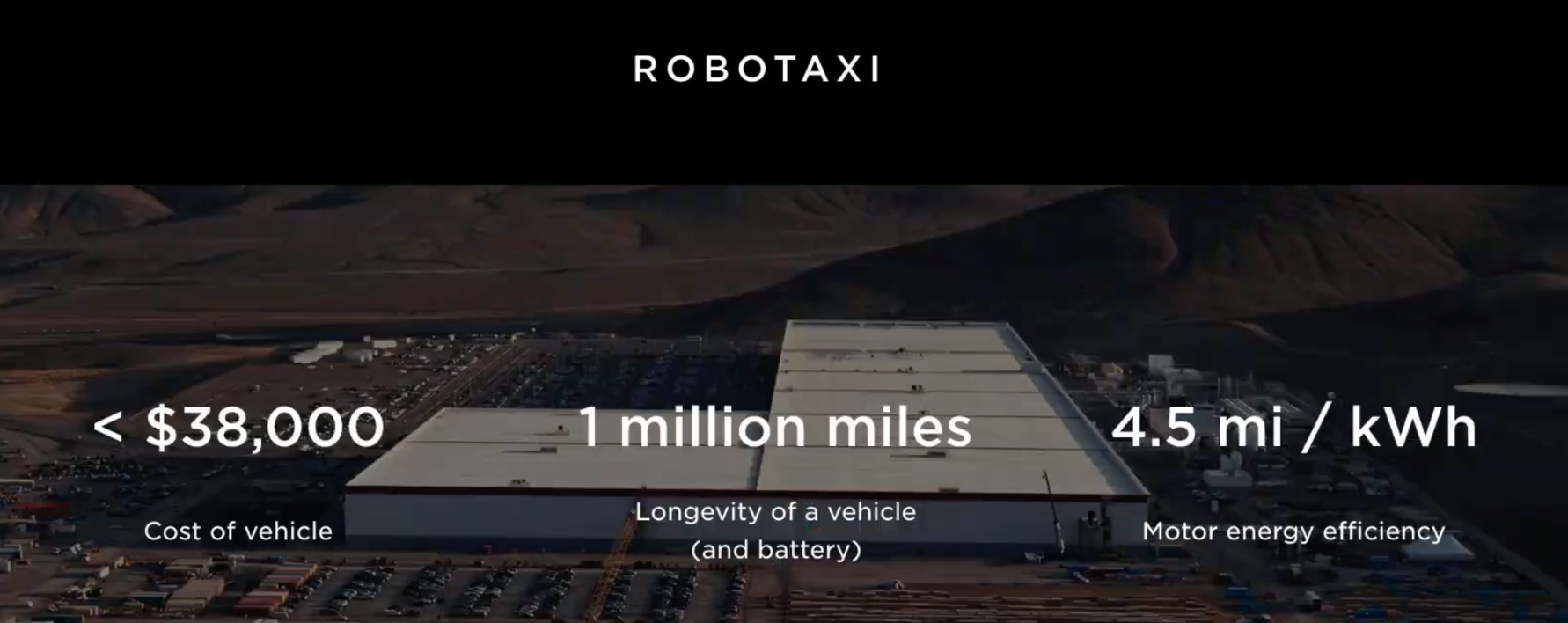 Sign up for daily news updates from CleanTechnica on email. Or follow us on Google News!
Sign up for daily news updates from CleanTechnica on email. Or follow us on Google News!
Data centers may see an investment of nearly $1 trillion in the US in the next 4 years as “hyperscalers” with aggressive AI goals like Amazon, Google, Meta, Tesla, and Microsoft build new computing facilities in a frenzy to keep one step ahead of the competition. Parts of Virginia, primarily those counties closest to Washington, DC, are seeing the greatest increase in the construction of new data centers. A report commissioned by Virginia’s legislature and released last December found the build -out of data centers to meet “unconstrained demand” would double the state’s electricity consumption by 2033 and nearly triple it by 2040.
According to Canary Media, in order to meet that increase in demand for electricity, Virginia would need to erect twice as many solar farms per year by 2040 as it did in 2024, build more wind farms than all the state’s current offshore wind plans combined, and install three times more battery storage than Dominion Energy, the state’s biggest utility, now intends to build. Even it it does all that, Virginia would need to double current power imports from other states, but even that wouldn’t be enough. It would still need to build new methane-powered generating plants, which would undermine Virginia’s clean energy goals. Meeting just half the unconstrained demand would require building seven new 1.5-gigawatt methane plants by 2040, which is nearly double what Dominion is already planning to build.
In January, Virginia lawmakers unveiled a package of legislation to put some guardrails on the data center industry. “If we fail to act, the unchecked growth of the data center industry will leave Virginia’s families, will leave their businesses, footing the bill for infrastructure costs, enduring environmental degradation, and facing escalating energy rates,” state Senator Russet Perry, a Democrat representing Loudoun County which sits in the heart of Virginia’s “Data Center Alley,” told reporters at the state capitol in Richmond last month. “The status quo is not sustainable.”
Data Centers & Politics
Sustainable or not, the legislative package faces stiff opposition from Virginia governor Glenn Youngkin, who wants the state to “continue to be the data center capital of the world.” At present the industry supports 74,000 jobs and contributes $9.1 billion to the state’s economy, not to mention billions more in local revenue. Nonetheless, Michael Webert, a Republican in the House of Delegates, says lawmakers have a responsibility to “make sure residential customers aren’t necessarily bearing the burden” of data center growth.
With some foresight, the data center boom can actually help — not hurt — America’s already stressed out grid. Data center developers can make choices right now that will lower grid costs and power-system emissions, Canary Media says. These solutions could also be an advantage for developers by allowing them to pay less for interconnection and power, win social license for their AI products, and possibly plug their data centers into the grid faster than their competitors can. When it comes to the grid, the nation faces a computational crossroads. Down one road lies greater costs, slower interconnection, and higher emissions. Down the other lies cheaper, cleaner, faster power that could benefit everyone.
After decades with virtually no increase in US electricity demand, data centers are driving tens of gigawatts of demand growth in some parts of the country, according to an analysis by Grid Strategies. Providing that much power would require “billions of dollars of capital and billions of dollars of consumer costs,” said Abe Silverman, an energy consultant at Johns Hopkins University. Utilities, regulators, and everyday customers have good reason to ask if the costs are worth it — because that’s far from clear right now, he added.
Crypto & AI
A significant amount of the projected growth in demand for electricity is being driven by cryptocurrency mining and AI, which may hold great promise but does not yet have a proven sustainable business model. That raises questions about the durability of the industry’s power needs. Today, power plants and grid infrastructure simply can’t be built fast enough to provide what data center developers say they need. Bold data center ambitions have already collided with reality in Virginia. “It used to take three to four years to get power to build a new data center in Loudoun County,” in Virginia’s Data Center Alley, said Chris Gladwin, CEO of data analytics software company Ocient, which works on more efficient computing for data centers. Today it “takes six to seven years — and growing.”
Data centers need reliable round-the-clock power year-round and it is the responsibility of utility companies to provide it, including at the moments of peak demand that typically happen during hot summer days and cold winter nights. A lot of the money utilities spend goes toward building the power plants and grid infrastructure needed to meet those demand peaks. When renewables fall short, other resources like hydropower, nuclear, geothermal, or storage batteries could meet some of the demand, but that is not what’s happening in the real world. Goldman Sachs predicts that powering AI will require $50 billion in new power generation investment by 2030 — 40% from renewables and 60% from methane.
Tech companies are finding their clean energy goals are coming under pressure because of their need for electricity at all times of day. That forces them to look to any available source. Over the past decade, Amazon, Google, Meta, and Microsoft have secured about 40 GW of clean power capacity in the US, according to Bloomberg. But in the past four years, their growing use of electricity from methane-fired generating stations has pushed their emissions in the wrong direction. Google’s emissions are up 48% since 2019 and Microsoft has seen a 29% increase in its emissions in the past four years.
Part of the problem is that hundreds of gigawatts of wind and solar power projects are standing on the sidelines waiting for permission to get connected to the utility grid. “The data center build out, especially now with AI, is creating somewhat of a chaotic situation,” said James West, head of sustainable technologies and clean energy research at Evercore ISI. Many data center customers and developers are indifferent to clean energy. They simply seek whatever resource can get their facility online first.
An Opportunity For Fossil Fuels
Utilities that have sought for years to win regulatory approval for new gas plants have seized on data center load forecasts as a new rationale for why those plans should move forward now. A recent analysis from Frontier Group found at least 10.8 GW of new methane-fired power plants are being planned by utilities and at least 9.1 GW of methane and coal power plant closures are at risk of being delayed in order to meet projected demand. “This surge in data centers, and the projected increases over the next 10 years in the electricity demand for them, is really already contributing to a slowdown in the transition to clean energy,” said Quentin Good, policy analyst with Frontier Group.
Other AI data center developers appear to be making little effort to coordinate with utilities. In Memphis, Tennessee, a data center being built by xAI, the AI company launched by Elon Musk, was kept secret from city council members and community groups until its June 2024 unveiling. In the absence of adequate grid service from the Memphis municipal utility, the site has been burning gas in mobile generators exempt from local air-quality regulations, despite concerns from residents of lower-income communities already burdened by industrial air pollution. In December, xAI announced a tenfold increase in the site’s computing capacity — a move that the Southern Alliance for Clean Energy estimates will increase its power demand from 150 MW to 1 GW, which is equal to about a third of the peak demand for the entire city.
The nonprofit had hoped that “Musk would use his engineering expertise to employ Tesla Megapacks and solar batter with solar and storage capability to make this facility a model of clean, renewable energy. But now the project seems more like “a classic bait and switch,” said Stephen Smith, its executive director. Musk, who is a confirmed drug addict, has gone fully over to the dark side and abandoned any clean energy and green economy credentials he may have had at one time. Now he is simply engaged in a plot to beat out Sam Altman’s OpenAI, the people of Memphis be damned.
Policies & Priorities
But powering data centers by burning fossil fuels is not the only answer, Canary Media claims. Quentin Good of Frontier Group says, “The outcome depends on policy, and the increase in demand is by no means inevitable.” Abe Silverman of Johns Hopkins agrees. “There are all these trade offs with data centers. If we’re asking society to make trade offs, I think society has a right to demand something from data centers.”
That’s what the Virginia lawmakers proposing new data center bills said they were trying to do. Two of the bills would order state regulators to study whether other customers are bearing the costs of data center demand — a risk highlighted by the legislature’s December report, which found unconstrained growth could increase average monthly utility bills by 25% by 2040. Those bills are likely to be taken up in conference committee next month. Other bills would give local governments power to review noise, water, and land use impacts of proposed data centers, require them to improve energy efficiency, and mandate quarterly reports of water and energy consumption — just the sort of rules and regulations that MAGAlomaniacs despise.
Data center developers have the ability to minimize or even help drive down power system costs and carbon emissions. They can work with utilities and regulators to bring more clean energy and batteries onto the grid or at data centers themselves. They can manage their demand to reduce grid strains and lower the costs of the infrastructure needed to serve them. By so doing, they could secure scarce grid capacity in places where utilities are otherwise struggling to serve them, Canary Media says.
The question is, will they? Silverman emphasized that utilities and regulators must treat grid reliability as their No. 1 priority. “But when we get down to the next level, are we going to prioritize affordability, which is very important for low income customers? Are we going to prioritize meeting clean energy goals? Or are we going to prioritize maximizing data center expansion?” Given the pressure to support an industry that’s seen as essential to US economic growth and international competitiveness, he worries that those priorities aren’t being properly balanced today. “We’re moving forward making investments assuming we know the answer, and it’s not like if we’re wrong, we’re getting that money back,” he said.
The question therefore becomes, what are we the people getting for this torrent of new data centers? Is it adding value to our lives or is it just a massive dick measuring contest between tech bros? And is any of it worth the extra emissions that come from burning fossil fuels to power these data centers? Different readers will answer those questions differently, but they are questions that deserve to be asked.
Chip in a few dollars a month to help support independent cleantech coverage that helps to accelerate the cleantech revolution!
Have a tip for CleanTechnica? Want to advertise? Want to suggest a guest for our CleanTech Talk podcast? Contact us here.
Sign up for our daily newsletter for 15 new cleantech stories a day. Or sign up for our weekly one if daily is too frequent.
CleanTechnica uses affiliate links. See our policy here.
CleanTechnica’s Comment Policy




